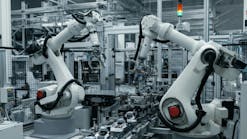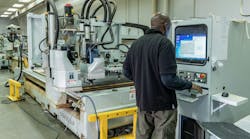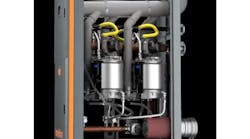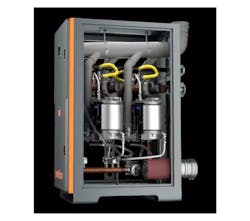Designing commercial-scale water-heating systems that balance capacity with space, cost, and downtime may seem like a daunting task. It doesn’t have to be. When effectively applied, modular tankless systems can cut capital costs by 50%, operation costs by 40%, and space needs by 80%, while simultaneously quadrupling reliability.
Interior of a heat exchanger in Intellihot's tankless system.
People often ask if tankless technology can meet large-scale demand. How can one possibly deliver up to 1.5 million BTUs without storage tanks? Below you will find an inside technical look into a radical engineering approach. As technology becomes more intelligent, some water heaters can learn the recirculation patterns and demands of a building. Then they would be able to automatically power on pumps and set the temperature to minimize cost without losing comfort. Here’s how it all works.
Pressure Drop
Have you driven a Prius? Imagine driving a battery-powered vehicle. Now, take your foot off the brake. Does the vehicle move? Technically, it shouldn’t move at all until you press the accelerator. However, as soon as you take your foot off the brake, the vehicle starts to creep forward, much like a gas-powered car. The reason that Toyota did this is because they want you to “feel” like you are driving a regular gas-fueled car with an automatic transmission.










